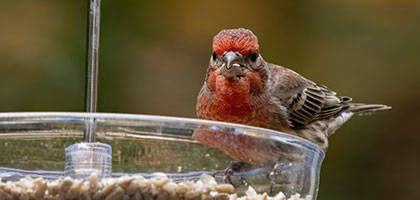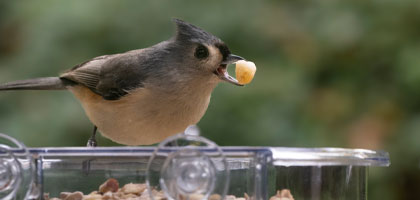The vibrant red plumage of cardinals can be a delightful sight in any backyard. These beautiful birds can bring life and color to your outdoor space.
But how do you attract more cardinals to your backyard feeder?
This guide will provide you with practical tips and strategies. From choosing the right bird feeder to selecting the best bird food, we've got you covered.
So, let's dive in and learn how to make your backyard a favorite spot for cardinals.
Understanding Cardinal Preferences
To attract cardinals, it's crucial to understand their preferences. Cardinals are drawn to areas that offer food, shelter, and safety.
These birds favor feeders with a stable perching platform. They find it easier to access food this way. Cardinals generally prefer calm and quiet environments.
Cardinals are non-migratory, making them a year-round guest in your yard. They are also ground feeders and enjoy foraging for seeds scattered on the ground.
Here are a few cardinal preferences to keep in mind:
- Stable platform feeders
- Areas offering protection from predators
- Ground feeding opportunities
Cardinals are especially attracted to the color red. Planting native shrubs that produce red berries can create a natural food source. They appreciate a space that meets their needs, ensuring they visit your feeder regularly.
Best Types of Feeders for Cardinals
Selecting the right feeder is essential to attract cardinals. They benefit from feeders that accommodate their size and feeding habits. A variety of feeder types can help meet their preferences.
Cardinals appreciate feeders that are easy to access. This includes designs that offer stability and ample space for landing. Brightly colored feeders can catch their attention, particularly the color red.
Consider incorporating these feeder types to appeal to cardinals:
- Large Bird Feeders
- Platform Feeders
- Suet and Peanut Feeders
Keep in mind that cardinals enjoy a quiet feeding area. Avoid placing feeders in high-traffic zones. Positioning feeders near protective vegetation can offer added security.
Large Bird Feeders
Large bird feeders can accommodate the cardinal’s size and diet. These feeders hold generous amounts of bird food. Their design helps reduce the need for frequent refilling.
Proper placement is crucial for large bird feeders. Position them at a suitable height to prevent squirrel access. The stable structure provides cardinals with an ideal feeding spot.
Platform Feeders
Platform feeders are excellent for cardinals. They offer a spacious surface where cardinals feel secure. Cardinals prefer these feeders due to their easy accessibility.
Placing platform feeders close to shrubbery provides extra safety. Cardinals feel more at ease with some cover. This encourages them to visit and feed comfortably.
Suet and Peanut Feeders
Suet and peanut feeders are perfect for providing high-energy food. Cardinals seek out these energy-rich options, especially during cold months. The feeders should hold unsalted peanuts and suet blocks.
These feeders can hang from branches, catering to cardinal feeding behavior. Ensure they are in sight but out of reach from pests. Maintaining cleanliness is vital to avoid disease spread.
Optimal Bird Food Selection
Choosing the right bird food is key to attracting cardinals. These vibrant birds have specific dietary preferences that, when met, ensure regular visits to your feeder.
Cardinals thrive on a diet of diverse seeds and mixes. Offering various food choices helps cater to their nutritional needs. Consider including different food types for optimal appeal.
Here are some of the best food options for cardinals:
- Seeds and Mixes
- Suet, Nuts, and Other Treats
- Fresh Fruit and Mealworms
Strategic food selection can also attract other bird species. A mix of these options not only invites cardinals but enhances your birdwatching experience.
Seeds and Mixes
Cardinals are fans of sunflower seeds, especially black oil sunflower seeds. These seeds are easy for them to crack open and consume. Safflower seeds are another excellent option that cardinals enjoy.
Offering a mix helps keep cardinals interested, as they enjoy variety. A consistent supply of seeds keeps them returning to your backyard feeder.
Suet, Nuts, and Other Treats
Suet is a reliable source of energy for cardinals, particularly in colder weather. Consider suet cakes, balls, or pellets to meet their energy demands.
Nuts, like unsalted peanuts, provide essential protein and fat. Ensure these are offered in feeders that accommodate cardinals comfortably. Regularly replenishing these treats maintains cardinal interest.
Fresh Fruit and Mealworms
Fresh fruit is a delightful occasional treat for cardinals. Slices of apples or fresh berries can pique their interest and add variety to their diet.
Mealworms are another valuable addition, especially during breeding seasons. These provide the protein cardinals need for health and vitality. Including such options diversifies their food experience.
Creating a Cardinal-Friendly Environment
Creating a welcoming environment is essential to attract more cardinals to your backyard. Cardinals need places that offer protection, sustenance, and comfort. Their natural habits should guide you in this process.
To create such an environment, focus on the following key areas:
- Shelter and Safety
- Water Sources
- Nesting and Mating Considerations
Simple changes can make your space more inviting. These efforts provide the right conditions for cardinals to visit and flourish.
Shelter and Safety
Shelter is crucial for cardinals to feel secure. Plant native shrubs and trees in your yard to provide natural shelter. Dense foliage offers protection from predators and creates suitable hiding spots.
Position feeders in areas that are calm and less trafficked. This reduces stress for cardinals and ensures a safe feeding experience.
Water Sources
Water is as vital as food for cardinals. A clean birdbath can encourage visits. Ensure the water is fresh and replenished regularly.
Incorporate a shallow water feature or dripper to keep the water moving. Moving water is more attractive to birds and helps prevent stagnation.
Nesting and Mating Considerations
Cardinals also need suitable spots for nesting and mating. Provide materials like twigs and soft yarn nearby to aid in nest building.
Position feeders and nesting materials near natural cover, like bushes and low trees. These areas offer privacy and suitable conditions for raising their young.
Protecting Your Feeder from Squirrels and Other Pests
Squirrels and raccoons can quickly become a nuisance at feeders. They consume the food meant for cardinals, making it necessary to deter them effectively.
Using a squirrel proof feeder can be a simple solution. These feeders come with mechanisms that prevent squirrels from accessing the food. However, keeping these persistent creatures at bay may require multiple strategies.
Here are some tips to protect your feeder:
- Use baffles on feeder poles to block climbing pests.
- Opt for seeds like safflower that are less appealing to squirrels.
- Place feeders away from launching spots, like trees and fences.
Regularly check and adjust these tactics to maintain their effectiveness. Protecting your feeder ensures that cardinals and other birds have ample access to food. This helps sustain their visits without interruption from unwanted guests.
Maintenance and Hygiene of Feeders
Proper maintenance and hygiene are crucial for keeping your bird feeders safe and inviting. Regular cleaning prevents the spread of disease among visiting birds.
Use a mild soap solution to clean feeders every two weeks. Make sure to rinse thoroughly to remove all residues that might harm the cardinals. Allow the feeders to dry completely before refilling them with bird food.
Inspect feeders for any damage or wear during cleaning sessions. Replace or repair parts as needed to ensure they remain functional and safe. This routine care will help attract cardinals and other bird species to your backyard and maintain a healthy environment for them.
Conclusion: Patience and Observation
Attracting cardinals to your backyard feeder requires patience and attention. Observe their habits and adjust your strategy as needed.
Over time, you'll find cardinals exploring your feeders more frequently. Enjoy the vibrant beauty they bring to your outdoor space, adding a unique charm and delightful experience to your daily life.




